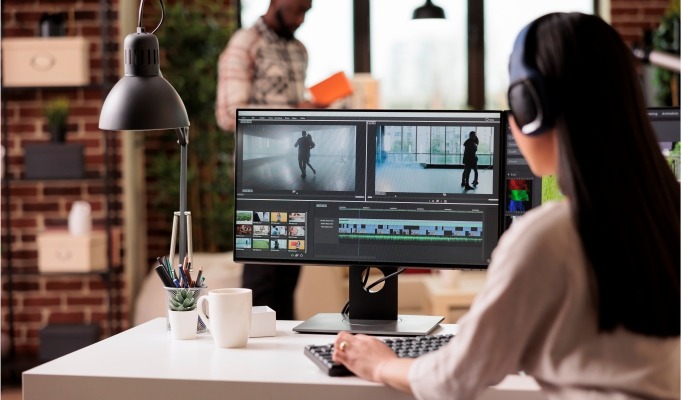
Let us begin from the beginning. What does ‘illustration’ mean? The word illustration means to shed light on something—to illuminate, to bring awareness to something using artistic expression.
In this fast-changing contemporary world, artists and graphic designers have been bestowed with the responsibility of illuminating the ever-growing complexities of the world.
This blog delves into the role of illustration in contemporary graphic design, explaining how it contributes to visual communication, branding, and overall aesthetic appeal.
The Evolution and Importance of Illustration in Graphic Design
If we look at the annals of history, illustrations have been a pivotal medium for storytelling and information dissemination. Whether ancient cave paintings or medieval manuscripts, illustrations have helped people convey symbolisms, narratives, and beliefs. With the advent of printing technology, innovations in the illustration industry have made it possible to
mass-produce information for wider accessibility.
In the contemporary world of graphic design, illustrations serve innumerable purposes. They don’t just add visual appeal; their main task is to simplify complex ideas and emotions and make them palatable and memorable for the masses. It is these profound images that evoke feelings and build connections with the audience.
Let us understand the impact of some iconic uses of illustrations in the modern world through some case studies:
Case Studies: Iconic Uses of Illustration in Branding
Dropbox’s Rebranding
One of the most popular names in the cloud storage space, Dropbox, underwent a complete rebranding that changed the way we think about Dropbox.
The company shifted from a purely 2D functional image to embrace a more playful and abstract identity. The aim behind this shift was to foster creative collaborations and welcome a broader futuristic brand meta-identity.
Airbnb’s Illustrated City Guides
Airbnb, one of the most iconic brands in the world, introduced innovation through its new illustrative city guides. These guides feature bespoke illustrations that capture the essence of different locales and work as an appetizer before actually visiting the place. This innovation through illustration turned out to be a win-win: firstly for Airbnb because it made them stand out in connecting with their audience; secondly for customers who love being greeted personally by Airbnb, offering them flavors for the upcoming journey; and
Lastly, locals who felt proud of their place, their locality, and their cities being illustrated beautifully and attracting new tourism. It’s all a win-win, right?
Cultural and Technological Influences on Illustration
Illustration in graphic design is deeply influenced by cultural trends and technological advancements. As society becomes more globalized, designers are increasingly mindful of cultural sensitivities. This awareness is crucial when creating illustrations meant to resonate with international audiences. Understanding cultural symbols, colors, and iconography is essential to avoid misinterpretations and to convey the intended message effectively.
The Intersection of Culture and Illustration
Culture is the tree on which the fruits of beautiful illustrations grow. In that sense, they do not intersect but rather complement each other. As consumers demand more social awareness, sustainable ethics, and inclusivity, the demand for cultural consciousness in designing graphics has almost created a new visual language to enrich their illustrations.
Technological Advances: Digital Tools and AI
There’s another angle, another path joining the intersection of culture and illustration, and that is technology!
The rise of digital super tools has changed the way we create and imagine illustrations. The way software like Adobe Illustrator, Procreate, and CorelDRAW offer exceptional control over the creation and manipulation of images, they have not only democratized the art of illustrations but also made impossible designs more than possible. You can learn all these tools by joining the best graphic design institute in Rajkot or a nearby area.
Moreover, with the advent of recent generative AI tools and prompt engineering, the possibilities of illustrations are practically beyond unthinkable, and that too in perhaps half the time and energy spent than before!
Emerging Trends in Illustration Styles
Minimalist and Flat Design
Such an illustration theme, characterized by simple geometric lines, flat colors, and clean feels, continues to be popular in certain market segments. Not only are these illustrations quick to grasp, but they also tend to offer simplicity that remains engaging even with much interaction.
Organic and Hand-Drawn Aesthetics
There is something about organic, hand-drawn aesthetics that cannot be matched by digital tools. Therefore, this stream of illustrations continues to hold its demand in certain brand segments like artisanal products, heritage illustrations, etc.
Surreal and Abstract Illustrations
Such illustrative themes were not mainstream in past centuries, but with the growing complexity of products and their objectives, there is a need for surreal and abstract art forms.
Such design themes are finding their requirements in big tech startups, and deep symbolisms of political landscapes that require thought-provoking visuals pushing the boundaries of imagination, e.g., OpenAI, SpaceX, and Neuralink.
Contemporary Utility of Illustrations in Storytelling, User Engagement, and Social Change
Illustrations drive the chariot of social change. They invoke characters for storytelling and rally mass engagement through memetics. They set the tone for storytelling, establish benchmarks, and define the purpose of an idea. How did the rainbow become the symbol of gender inclusion? How did the “All Eyes on Rafah” become a symbol of resistance? How do these activism campaigns around social justice, public health, and environmental issues become so popular and global? This is the power of illustrations!
Also Read: Psychology of Color in Logo Design
Conclusion: The Future of Illustration in Contemporary Graphic Design
As we look to the future, the role of illustrative engagements in contemporary graphic design is likely to only expand. With tech advancements like augmented reality (AR) and virtual reality (VR), it becomes essential for aspiring illustrators and graphic designers to familiarize themselves with powerful tech tools to understand the experiential and immersive world of future illustrations.
Not just tech, it is quintessential for aspiring illustrators to deeply understand the historical and cultural sensitivities of the modern world in order to integrate them with advanced tech tools to create memorable designs. In conclusion, the in “Role of Illustration in Contemporary Graphic Design,” the possibilities may seem unthinkable yet, but this is what art itself is: carving out something that is impossible at first but alive in imagination first and reality next.
Latest Articles
- All Posts
- 3D Animation
- Blog
- Graphic Design
- Video Editing








The Role of Illustration in Contemporary Graphic Design – ArtShala
[url=http://www.gi1vq19g9dy45ys4im15f355z12m90bjs.org/]uwiqwkvyno[/url]
awiqwkvyno
wiqwkvyno http://www.gi1vq19g9dy45ys4im15f355z12m90bjs.org/